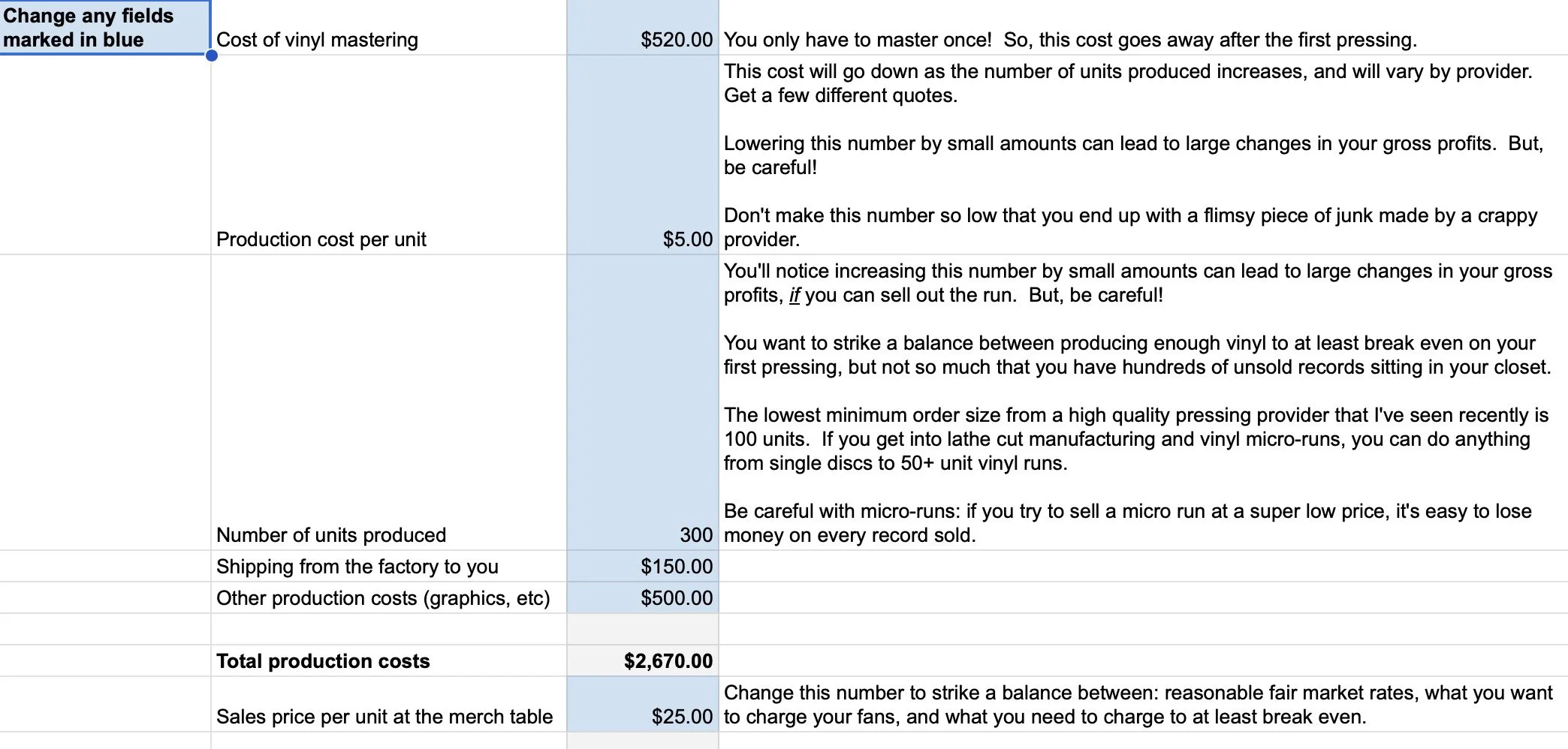Why I’m stoked about 10 inch vinyl
I’m super stoked about 10’’ vinyl coming back! A 10’’ record is the EP format of vinyl record production: it sits in-between a 45 RPM two-sided double single, and a full-length long play (LP) record.
A 10’’ record can fit about 4-6 songs, depending on the length of the songs: about 10-15 minutes of music per side. They’re about half the total play time of your standard LP.
After many years of dormancy, record pressing plants are finally starting to offer this as a standard format again, and the minimum order size can be as low as 100 units.
That’s amazing, because for the first time in music history, this has now unlocked the ability for smaller artists to produce vinyl at an affordable cost, at a small enough volume where they can actually have a shot at selling out the run!
Back in the day, you’d see minimum order sizes as high as 1000 units from the pressing plants: unaffordable for small artists to produce, and an unrealistic volume for them to sell. This meant that only artists of a certain size and cachet could even afford to make vinyl. No longer!
Producing your first vinyl record
I always love to see creative ambition, but with physical record production it’s very easy to bite off way more than you can chew, and get yourself financially upside down on the project. That’s where the amount of records you would need to sell to break even is unrealistic for your fanbase.
Don’t do what some bands do: get tunnel vision on making some massive double vinyl LP project with 40 songs, before you know if your fans will buy it, or how much they will pay for it. Selling out a limited run 10’’ or 45 RPM single pressing as your first vinyl project can be a much more sustainable approach.
Producing a full length LP in vinyl is much more costly in every way: writing, recording, mixing, mastering, packaging design, and the physical manufacturing of the record. Double those costs again for making a double LP.
Aiming for sustainability
If you go too big too early, without running the numbers in advance, you can easily end up with boxes of unsold records sitting in your closet (and an empty bank account) after putting in a massive amount of work. That sucks.
On the other hand, if you start out a little smaller with a scaled down project and then sell out your very first vinyl run, the proceeds could fund your entire next full length recording project.
My advice: when it comes to vinyl production, start out with very small projects done at very high quality, and then stair-step the project size up into bigger and bigger projects as you can afford to do so. If you focus on making high quality vinyl releases, your fans will gradually start to learn that when you put out records, they’re worth paying a premium for, no matter how many songs are on the disc.
Smaller, limited-edition runs of double singles, 45’s, or 10 inch records are all a great way to offer a high quality product at a reasonable price to your fans, at an affordable cost for you to make, and they can earn you enough cash to fully fund your next record.
Case Study: Producing the Pijama Piyama debut 10’’ vinyl
A ways back, I helped the fantastic Phoenix indie cumbia band Pijama Piyama out on the mastering for the vinyl run of their debut vinyl record. And, I’m pleased to report they’ve recently sold out the pressing-an amazing accomplishment!
They’ve been kind enough to give permission for me to share the rough backend financial numbers we developed when working on the project together. You can view that spreadsheet here.
Costs and profits from the Pijama Piyama 10 inch vinyl record production.
It’s got all of the costs listed for the vinyl manufacturing run: mastering, production, artwork, packaging design, etc. The sheet then calculates the amount you’d need to sell your record for at the merch table to break even on the project, how many units you’d need to sell to break even, plus your expected profit if you were to sell the run out.
Don’t lose your hat on a vinyl project-run the numbers first! The Can You Afford Vinyl calculator is always available for you to experiment with; punch in your own numbers and see what happens.

